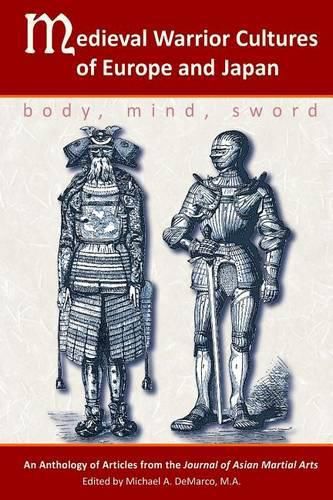Readings Newsletter
Become a Readings Member to make your shopping experience even easier.
Sign in or sign up for free!
You’re not far away from qualifying for FREE standard shipping within Australia
You’ve qualified for FREE standard shipping within Australia
The cart is loading…






There are simularities and differences between the European and Japanese medieval warrior traditions that reflect the social evolutions within those cultures. Over the years publishing the Journal of Asian Martial Arts, we published articles that presented the main themes found in this unique area of comparative studies. The most important of these writings are assembled in this anthology for your convience. Chapters 1 and 2 are by Dr. Willy Pieter, a leading scholar with a thorough grasp of European and Japanese martial art traditions. His first chapter examines the feudal system and how aspects of social organization helped form the warrior ethic, resulting in a mix of scientific and intuitive elements. In the second chapter Dr. Pieter illustrates how the perception of the human body and mind are culturally different in the East and West. Westerners have a long tradition of dualism, which separates the body and mind, while the Eastern approach has been wholistic. The author discusses scientific and medical histories for insight, particularly Chinese and European influences on Japan. In the third chapter John Michael Greer presents the esoteric side of a European sword tradition as found in the writings of Dutch fencing master Gerard Thibault (ca. 1574-1627). He notes that Asian and Western combat systems havebeen understood in sharply different ways over the last century or so. Asian combatives came to be associated with Eastern spiritual traditions and seemed to be very different than any Western combative system. However, this short chapter shows that there is actually much in common. In the final chapter Matthew Galas compares and contrasts the sword arts in Germany with the classical Japanese martial traditions. The period covered by this inquiry reaches from approximately 1350 until 1600. The focus is on general principles and combat philosophy. The study reveals that German sword techniques were as effective as their counterparts in feudal Japan. The content in this anthology is usefull for anyone interested in either or both European and Japanese martial art traditions exemplified during their medieval periods. Enjoy reading this special anthology dedicated to two leading warrior traditions.
$9.00 standard shipping within Australia
FREE standard shipping within Australia for orders over $100.00
Express & International shipping calculated at checkout
There are simularities and differences between the European and Japanese medieval warrior traditions that reflect the social evolutions within those cultures. Over the years publishing the Journal of Asian Martial Arts, we published articles that presented the main themes found in this unique area of comparative studies. The most important of these writings are assembled in this anthology for your convience. Chapters 1 and 2 are by Dr. Willy Pieter, a leading scholar with a thorough grasp of European and Japanese martial art traditions. His first chapter examines the feudal system and how aspects of social organization helped form the warrior ethic, resulting in a mix of scientific and intuitive elements. In the second chapter Dr. Pieter illustrates how the perception of the human body and mind are culturally different in the East and West. Westerners have a long tradition of dualism, which separates the body and mind, while the Eastern approach has been wholistic. The author discusses scientific and medical histories for insight, particularly Chinese and European influences on Japan. In the third chapter John Michael Greer presents the esoteric side of a European sword tradition as found in the writings of Dutch fencing master Gerard Thibault (ca. 1574-1627). He notes that Asian and Western combat systems havebeen understood in sharply different ways over the last century or so. Asian combatives came to be associated with Eastern spiritual traditions and seemed to be very different than any Western combative system. However, this short chapter shows that there is actually much in common. In the final chapter Matthew Galas compares and contrasts the sword arts in Germany with the classical Japanese martial traditions. The period covered by this inquiry reaches from approximately 1350 until 1600. The focus is on general principles and combat philosophy. The study reveals that German sword techniques were as effective as their counterparts in feudal Japan. The content in this anthology is usefull for anyone interested in either or both European and Japanese martial art traditions exemplified during their medieval periods. Enjoy reading this special anthology dedicated to two leading warrior traditions.